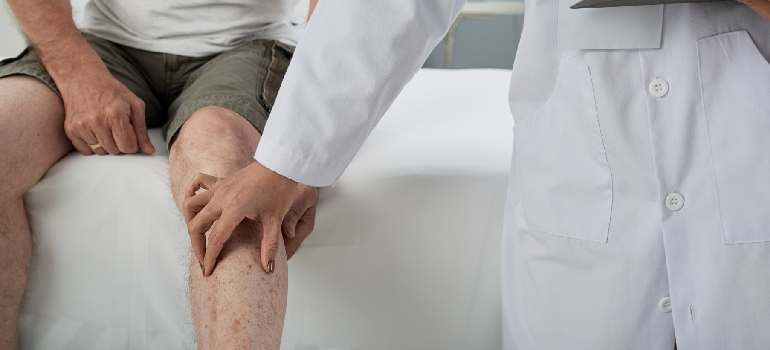Total Knee Replacement (TKR) is a surgical procedure to replace the damaged or diseased
knee joint with an artificial joint. It is usually performed in patients suffering from severe knee
pain,immobility due to osteoarthritis, rheumatoid arthritis, or injury. The surgery aims to
improve joint function, reduce pain, and increase mobility. However, the success of TKR
surgery largely depends on the post-operative care and rehabilitation, which includes
physiotherapy.
Physiotherapy is an essential component of the rehabilitation process after TKR surgery. It
helps in restoring joint mobility, improving strength and flexibility, reducing pain, and
increasing endurance. The physiotherapy program is tailored according to the patient’s
individual needs and the stage of recovery.
The physiotherapy program usually begins on the day of the surgery or the following day.
Initially, the physiotherapist helps the patient with simple exercises such as ankle pumps, leg
raises, and gentle knee bending and straightening to improve blood circulation and prevent
blood clots. The physiotherapist also teaches the patient breathing exercises and how to use
an incentive spirometer to prevent complications such as pneumonia.
As the patient progresses, the physiotherapy program becomes more advanced, focusing on
restoring joint mobility and strength. The physiotherapist helps the patient with
range-of-motion exercises, which involve moving the knee joint in different directions to
improve flexibility. Strengthening exercises such as quadriceps sets, leg presses, and
step-ups are also included to improve muscle strength and stability around the knee joint.
The physiotherapist also uses modalities such as electrical stimulation, ultrasound, and heat
therapy to relieve pain and reduce swelling around the knee joint. In addition, the
physiotherapist may use manual techniques such as massage and mobilisation to improve
joint mobility and flexibility.
The physiotherapy program also includes gait training, which involves walking with the aid of
crutches, walker, or cane. The physiotherapist helps the patient with proper gait patterns and
balance exercises to prevent falls and improve overall mobility.
The duration of the physiotherapy program depends on the patient’s individual needs and
the progress of recovery. Typically, the physiotherapy program lasts for six to twelve weeks.
However, in some cases, it may take longer to achieve optimal recovery.
In conclusion, physiotherapy is an integral part of the rehabilitation process after TKR
surgery. It helps in restoring joint mobility, improving strength and flexibility, reducing pain,
and increasing endurance. The physiotherapy program is tailored to the patient’s individual
needs and the stage of recovery. With proper post-operative care and rehabilitation, patients
can expect a successful outcome after TKR surgery.





